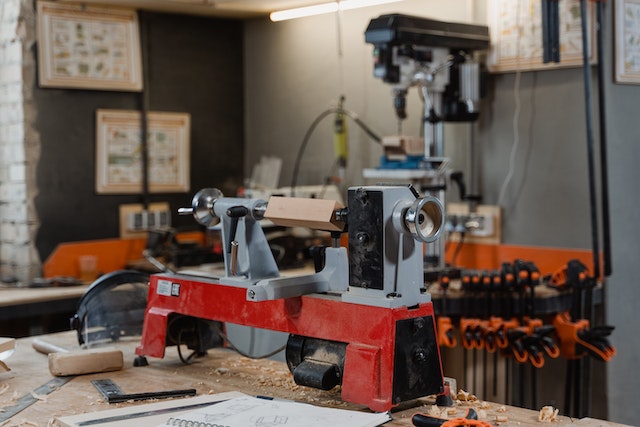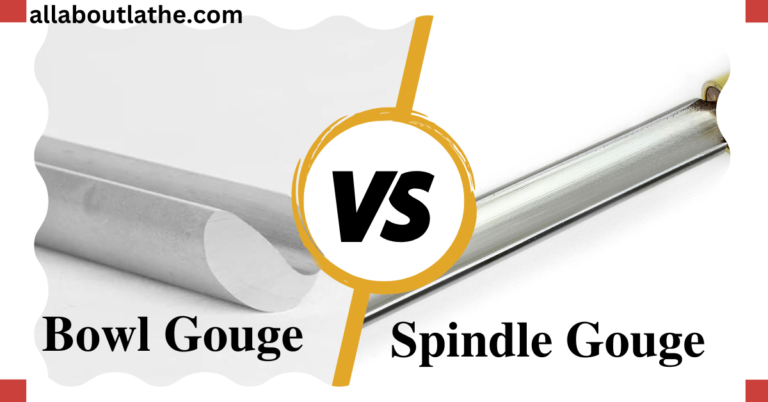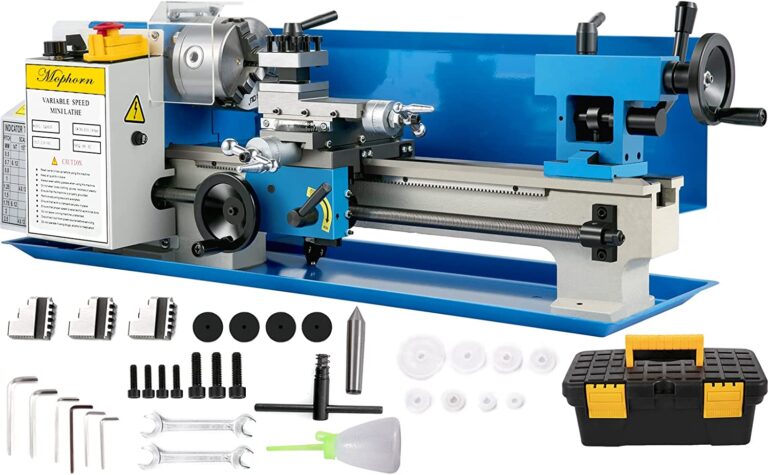Different Types of Lathe Chuck Mounting Methods
Hey there! Have you been looking to learn the different methods of lathe chuck mounting? Well, you have reached the right place. In this article, I will give you detailed info about the several kinds of lathe chucks and various types of lathe chuck mounting methods. So let us begin.
What is a Lathe Chuck?
An element of a lathe machine mounted on the headstock is called a chuck. The lathe chuck can be operated manually or with a power source. A lathe chuck’s main job is to hold the material block. It maintains the workpiece while rotating. It may contain both symmetrical and asymmetrical objects. In addition to lathe machines, milling machines also benefit from chucks.
Types of Lathe Chucks
Seven kinds of lathe chucks are used in lathe machines, which are:
Chuck with Magnets
When holding delicate objects in position, the magnetic chuck is useful. These tiny particles, made of magnetic material, are extra in a typical chuck. The possibility of the workpiece bending, buckling, twisting, or being otherwise deformed is present when using regular chuck jaws. In these cases, magnetic lathes are required.
Permanent or electromagnets are put inside the chuck. These magnets provide the chuck with the magnetic flux that is radiated. The workpiece is kept in position by the chuck thanks to this magnetism.
The Function of a Magnetic Chuck
The magnetic flux flows through the workpiece as the lathe is spun, capturing it. The magnets are taken out when the lathes are shut off. Then, keepers—highly permeable objects—are brought into touch with the magnets. By short-circuiting the flux, these keepers stop it from transferring through the workpiece.
Independent Four-Jaw Chuck

This chuck may use the two to four available jaws to fix uneven, circular, rectangular, square, and other shapes. The four-jaw independent chuck’s stepped jaws are each individually operated by a unique screw. This innovation allows the four-jaw independent chuck to fasten any form securely.
One benefit of the four-jaw independent chuck is that it is the most economical type of lathe chuck. The operational process is slowed down by excess features, and using it effectively takes considerable skill. Clamping inside or outside is necessary, depending on the task. For this chuck, an indicator gauge is also required. The jaws of this chuck are also movable.
Chuck combination
A combination chuck is used because it functions as both an independent and a self-centering chuck. The benefits of both chucks are enhanced by this specific feature of the chuck. The jaws are each operated by a different screw. They are also managed by the scroll disc. It has a bottom frame carved with teeth that fit into the scroll. These jaws and the screws rotate circularly. This movement happens when the scroll is turned by a pinion.
Universal Three-Jaw Chuck
The three-jaw lathe chuck is the most typical chuck. This chuck has jaws that are 120 degrees apart from one another. These jaws are made from valuable, high-quality steel.
When the chuck is engaged, the jaw teeth meet the bevel teeth. All three jaws can move in or out of the chuck center due to the interlocking. This moment is determined by the bevel pinion’s rotational direction. The square end key known as the pinion is managed by the chuck key.
The three-jaw lathe chuck is frequently useful for holding hexagonal and round workpieces. Using only three jaws reduces this chuck’s holding capacity, and wear causes the centering precision to degrade quickly.
Collet Chucks
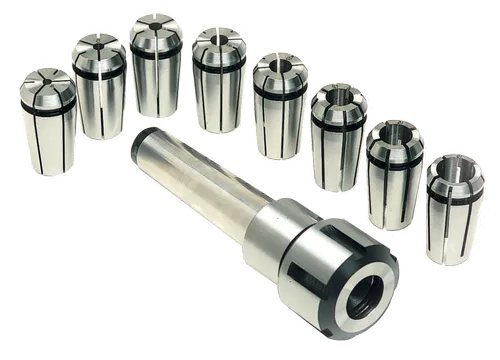
Collet chucks are frequently used in factories and other industrial settings to hold bar stock when quick fixes and precise centering are required.
The chuck is attached to the spindle via a nut. A bushing known as a collet is shaped like a lean cylinder and has cut slots running the length of one of its edges. The collet’s interior bore can be hexagonal, cylindrical, square, or another shape. Its shape is determined by the workpiece that passes through it. The outside of the collet is tapered. The threaded tail end interlocks with a key, and the tapered surface slides into the taper hole on the chuck’s body.
When you turn the key from the outside, the collet approaches. The split tapered end is pressed inside with a springy motion. And this makes it possible to hold the workpiece in the chuck securely and precisely. Additionally, the work item is precisely and securely stored in the chuck. Collectors are available in various sizes, which is useful for grabbing different bar stock sizes.
Air Chucks
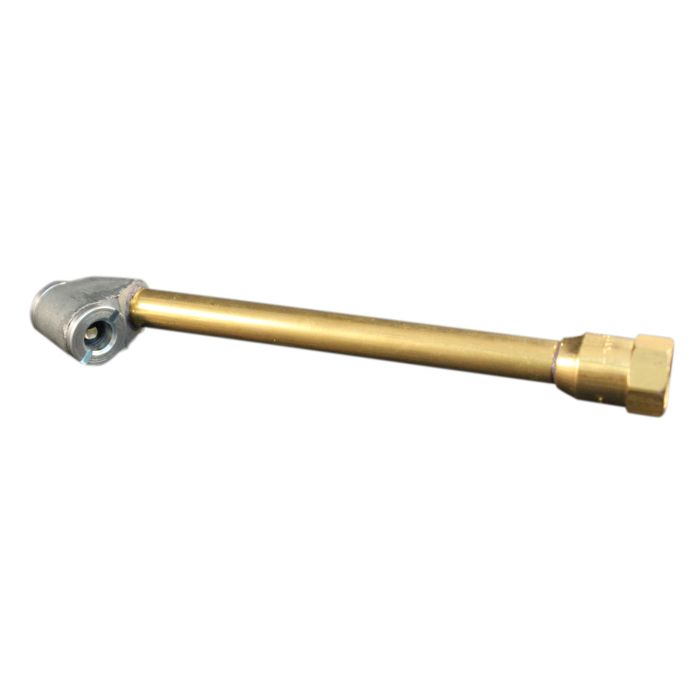
Most of the time, hydraulic or air chucks are useful in mass manufacturing procedures. An air or hydraulic utilized chuck must be operated by a hydraulic or air cylinder. This chuck’s holding capability is quick and efficient.
This rotating cylinder is fastened to the back of the headstock spindle. Fluid pressure is transferred to the cylinder by opening a valve with a lever, which causes the piston to drop inside the cylinder. The motion of the piston is transferred to the jaws by a connecting rod and links, which firmly grasp the workpiece.
Drill Chuck
When drilling, reaming, or tapping, a drill chuck keeps a linear shank tool firmly in place. Either the headstock spindle or the tailstock spindle can hold the chuck. The drill chuck is made up of centering jaws, which are moved by twisting a key.
Now, having covered the various types of lathe chucks, let’s discuss the chuck mounting methods used in lathes.
Types of Lathe Chuck Mounting Methods
Types of Lathe Chuck Mounting Methods
THREE types of lathe chuck mounting methods are being used at present.
1. Mounting the Drill Chucks
The simplest chucks to mount are drill chucks. These chucks are easy to mount, so you won’t have to go through any hassle.
You only need a hammer and a vise. How will you mount it, then? In this technique, you must utilize either heat or cold. I like it hot. Any cause? Yes, it goes more quickly. Some individuals do, however, favor the chilling process.
You need a heat gun or blow torch if you’re a heat fan. However, a kitchen freezer will be necessary if you enjoy the cooling procedure.
2. Mounting the Jawed Chucks
In recent years, mounting methods for jawed chucks have multiplied. A conscience function is included with each jawed direct mount lathe chuck idea. Jawed chuck mounts, which come in keyed and keyless variations, are typically tightened and loosened by hand only. Both the tool and the workpiece are successfully secured in place when the jaw is tightened upon them. This design, found in numerous workshops and machine shops, is sometimes referred to as a “universal chuck.”
Additionally, I should mention that Powermatic lathes are exceptional in terms of quality and prestige.
Jawed chucks can be mounted using three techniques.
2a: The Thread Spindle Nose Method
This process will involve the backplate. It is necessary to thread the backplate. It must be fastened to the threaded spindle’s nose. Even if the procedure is simple, it will take a lot of your time.
Your time and work would not be worth it, in my opinion. This is because there are better options that will enable you to complete tasks much more quickly and easily.
But because it is an extremely traditional practice that has been in use for a long time, I felt it was important to highlight.
2b: Spindle Nose with Taper
I believe it to be the greatest choice for jawed chucks.
You will save time and work this way. You must, in this instance, attach the self-releasing taper to the male taper. The method greatly enhances the system’s ability to repeat itself.
2c: Spindle Nose for Cam Lock
It is another efficient way to mount the chuck. But honestly, it is just a modified version of the tapered spindle nose technique. You must force the chuck against the taper using this technique.
The technique has recently gained a lot of popularity for installing jawed chucks. So, unless you have already decided, I strongly encourage you to take this approach.
3. Mounting Collet Chucks

Collet chucks differ slightly from the other two. That doesn’t mean that you can’t mount these kinds of chucks using the procedures that were previously discussed.
You might be surprised to learn that you can use the techniques for drill and jawed chucks.
Lathes that use collet chucks often have a special mounting system for the chuck. Said, those lathes have a collet-closing system, so you can mount the chuck with ease.
Now, the collet-closing mechanism is devoid of a backplate. Instead, a feminine taper is included. A male taper who matches will hold this. Or perhaps there is a sleeve. The drawbar is hollow as well. It will reach the back and pass through the headstock.
The closing mechanism is configured there, as you can see. The mechanism is what allows the collet to open and close in such a brief amount of time. This style of lathe chuck mounting is characterized by its mechanism for maintaining the workpiece’s stationary position. A chuck, sometimes called a lathe spindle thread size, has flexible sleeves or collars that make holding the tool or workpiece simpler. This maintains everything in place using static friction when everything is functioning normally.
What is a Lathe Chuck Mounting Plate?
The adaptor backplate is required to secure the lathe chuck indirectly. When a lathe chuck cannot be connected to the spindle directly, it is useful. The adaptor backplates are secured to the lathe chucks’ backs via screws. The spindle adapter can also be connected using screws or the CAMLOCK system. Before installing, ensure the surfaces of the spindle-head assembly, adapter, and lathe chuck are clean. Cleaning a character will go well with WD-40’s many uses.
The lathe chucks’ jaws are evenly clamped by a scroll plate. The lower scroll plate has teeth, which, together with the toothed wheel, form a gearwheel (also known as the nut). By turning a wrench in the gearwheel, a scroll plate is set in motion.
By placing the chuck’s Camlock pins into the lathe spindle, turning a cam inside the spindle with a wrench, and pushing the Cam Lock hooks inward to snug the chuck against the spindle, a lathe operator mounts a chuck.
Measure the distance between the spindle’s and the pin’s centers. And for straightforward chuck attachment dimensions, this is required.
By placing the chuck’s Camlock pins into the lathe spindle, turning a cam inside the spindle with a wrench, and pushing the Cam Lock hooks inward to snug the chuck against the spindle, a lathe operator mounts a chuck.
Measure the distance between the spindle’s and the pin’s centers. And for straightforward chuck attachment dimensions, this is required.
Conclusion

That is all there is to know about different lathe chuck mounting techniques. However, we must issue a warning: You should be aware that the chuck needs to be fitted correctly to function effectively.
If you choose this, it can cause issues for both you and your system. It makes sense to apply the chucking methods to the selected pieces.
You now have a clear understanding of the three different types of lathe chuck mounting techniques. However, I want to issue a word of warning. You see, the chuck needs to be mounted properly as it can raise issues otherwise.
If not, it can cause problems for both you and your machine. Applying the techniques to the anticipated chucks would be wise. However, there is no reason you should have any problems if you follow the directions exactly.
Hi, my name is Charles Winn, A DIY enthusiast, Mechanical Engineer. I was born and raised in Springfield, Missouri. I am also a father of two troublemaker kids, a terrible photographer, and I love to play chess.




